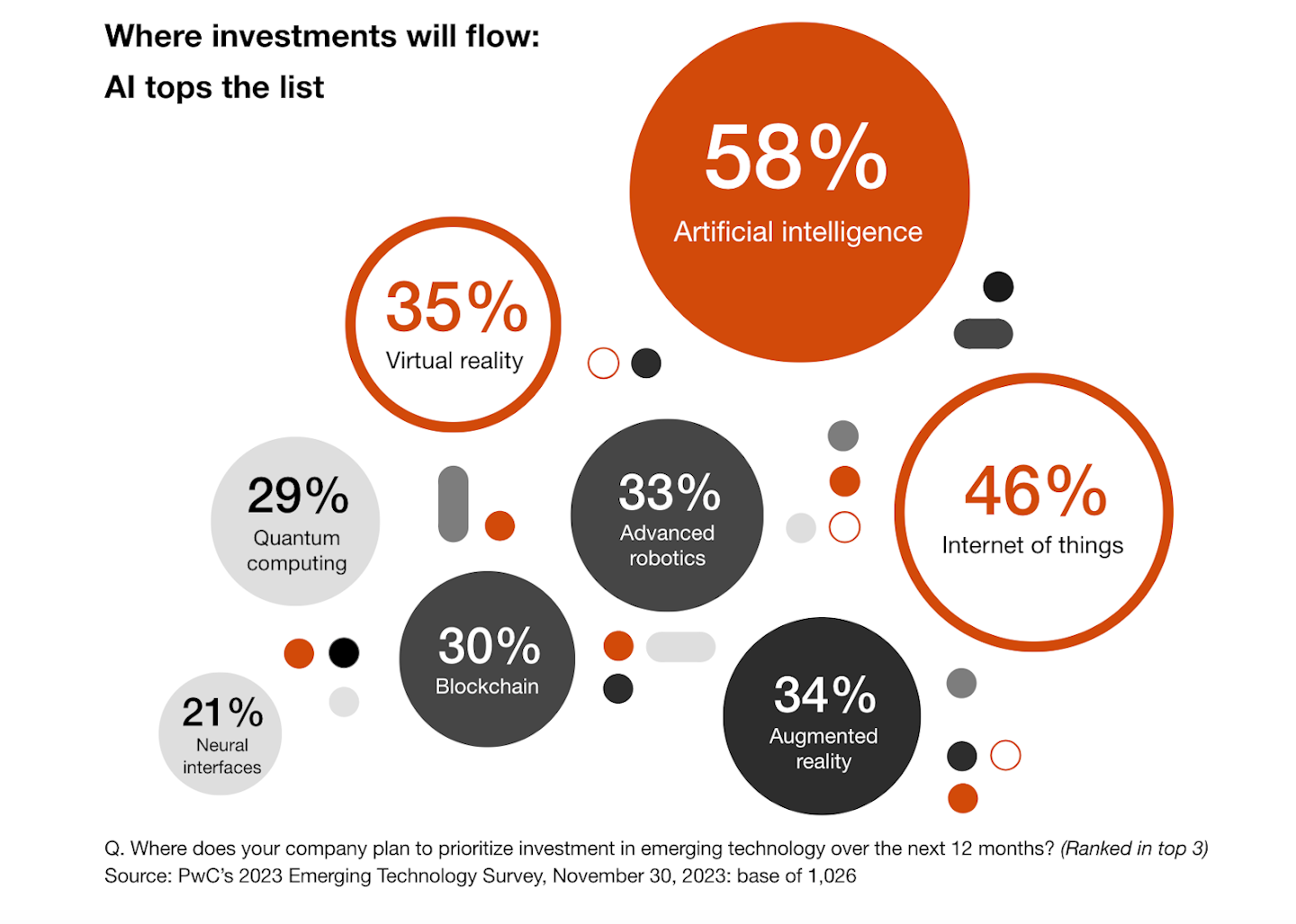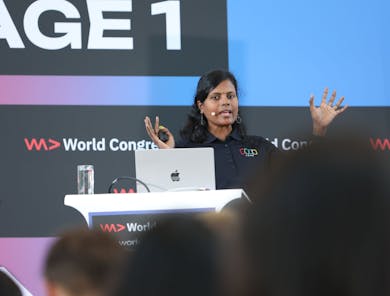The demand for cloud processing power is not slowing down. With SaaS spending projected to grow—for a second year in a row—by 17% in 2024, the cloud sector will keep growing and is likely to offer plenty of job opportunities for software engineers.
As cloud computing rapidly expands, new technologies and processes emerge and reshape how companies work with the cloud. For example, where once there was a one cloud solution, now there’s the multi-cloud strategy which 9 out of 10 large companies have already adopted. And of course, with the introduction of generative AI and LLMs, we are seeing a lot of new ways to spur on innovation and automation. So let’s take a closer look at some of the most popular cloud computing trends coming in 2025.
1. Serverless computing
Serverless computing will shape how startups, enterprises, and indie hackers deploy and scale up their apps, including generative AI apps, while meeting the market’s demand without compromising the user experience.
Are there servers on a serverless computing system? Yes. But someone else is handling that for you. With Function as a Service (FaaS) paradigm, developers focus on deploying apps that run on servers handled by server providers. If it sounds familiar, it’s because it’s almost a PaaS system. The key difference with outsourcing a platform is that, on serverless, you’d only pay for execution or cloud resources, not idle time. So the provider will take care of patching, running, plugging in and updating the racks, and you’ll pay only for the processing power you’ll draw on. It’s excellent to scale up. You don’t have to worry about upgrading your server farm if you suddenly strike a deal with a client that will require you to 4x your computing power.
Yet, as it is still in its early stages, there are drawbacks to going serverless, especially vendor lock-in risks, since anecdotal evidence suggests that most developers think swapping a set of APIs from one vendor to the other is easy, but it’s actually pretty hard. Also, partnering up with someone who can realistically offer auto-scaling is probably a smart idea, because if not, your set of APIs—or performance—might be cut short if your app suddenly becomes a hit.
Quick deployment makes serverless setups suitable for building RESTful APIs, and microservices, or even offering separate billing for tech platforms. Some products that allow developers to run serverless apps include AWS Lambda or Azure Functions, which require certain knowledge in config to avoid huge invoices. Some other interesting solutions, such as Genezio, allow developers to scale up their microservices while maintaining the code in a single container and while having a predictable cost structure. This platform, for example, facilitates building and hosting serverless apps with a type safe backend that scales automatically, so you won’t be thrown off balance if your app sees a high demand.
2. Artificial Intelligence for cloud computing
AI and machine learning (ML) are gearing up to play a more significant role in improving cloud resource management, moving from being just a trend to becoming commonplace in all organisations.
To begin with, AI could be the key to running AI on the cloud, thanks to hyper-scaling.
Market conditions suggest that the cloud was not prepared to run generative AI solutions. This is not the first time the cloud is not ready for a certain use case. When the lockdown hit white-collar workers, Microsoft had to rush and adapt Teams so it could keep pace with the sudden demand. But making AI available to their clients might have to do more with adapting the infra rather than just offering firepower.
Much of today’s cloud footprint consists of servers designed to run multiple workloads simultaneously and that leverage general-purpose CPU chips. GPUs are good for AI because they can do many calculations at once. Researchers are suggesting that this new hardware footprint and AI for load balancing and scaling up will be the foundation for generative AI and even for healthcare solutions that require very low latency.
💡 Cloud engineers, cloud software architects, and ML engineers could bring together their knowledge to deploy budget-friendly LLMs that don’t eat into the cloud budget.
The future of cloud computing looks promising. Businesses are turning to the cloud for data storage and benefiting from AI-powered data analytics that show patterns and trends that might otherwise go unnoticed. According to PWC’s 2023 Emerging Technology Survey, 73% of US companies have already adopted AI in some areas of their business, underscoring the growing recognition of AI's positive impact on business operations.

3. Hybrid or Multi-Cloud
Hybrid and multi-cloud strategies are a mainstay because they prevent vendor lock-in. Organisations are moving towards custom-fit approaches, which combine on-premises data centres and cloud services, either from big vendors or from niche companies.
Hybrid clouds offer advantages to large enterprises with legacy systems, and are also useful in industries like healthcare and finance, which need strict data conformity and scalability. Developers often use public clouds for testing and development, and reserve private clouds or on-premises for production environments. Multi-cloud flexibility helps with data location rules and provides backup and reliability. It also makes it easy to transfer services to another provider if one goes down. Although both strategies can seem excessively complex for some, tools like Terraform can help manage possible bumps in the road.
💡65% of cloud services are provided by the four major players: Microsoft, Amazon, Google, and Alibaba. The remaining 35% is still a good opportunity for multi-cloud providers.
Looking ahead, multi-cloud dominance is likely, allowing businesses to combine various clouds. Companies will use a mix of different types of cloud services, such as hybrid and multi-cloud ones. This approach should help companies be flexible and quick, keep data safe from breaches, and save money.
Learn about the Usual Job Requirements for a Cloud Engineer →
4. Distributed applications in logical monoliths
When it comes to developing applications, the traditional approach involves breaking down large applications into smaller, independently deployable units called microservices. Each microservice operates independently yet contributes to the overall functionality. But using microservices can be difficult to both develop and deploy. Because there are so many nodes running together, extra services like Apache Zookeeper, Grafana, and Kibana are usually needed to manage and keep track of them. Also, it can be hard to keep consistency across all units. In this kind of setup, nodes might not always match up perfectly because of how spread out everything is.
An alternative is to create applications as logical monoliths. This way, developers maintain a cohesive code structure without overlapping the process of writing code (logical boundaries) from the process of deploying it (physical boundaries). In this approach, an automated system handles code distribution and execution, and should make the deployment process more practical.

There are plenty of alternatives for devs who need to run serverless apps that are “monolithic” or in one piece. One of them is Genezio, a platform for running serverless apps with auto-scaling. Genezio helps developers manage—and own—their code in one place or logical monolith. This makes it easier to create, deploy, and maintain web, mobile, or enterprise apps with typesafe communication between frontend and backend.
5. Edge computing
Edge computing is centred on handling data near the generation server, virtually minimising bandwidth loss. Think about smartphones that process data on the device before sending it to the cloud—that’s what we call “edge computing” because part of the data is being processed on the edge of the cloud.
Edge computing can be practically available on consumer devices that can “outsource” their processing power to the cloud so they can run bulky AIs on a person’s handheld. Since Apple is in talks with Google to include Gemini on the iPhone, and AI chatbots have famously been stuck at capacity plenty of times, they could rely on cloud edge computing to get impressive AI capabilities with almost no latency.
Video game publishers could also realise the long-standing dream of allowing gamers to play their first-person shooters by streaming their games. Google, a top cloud provider, had to kill its product Stadia because it couldn’t work this system out. Edge computing, coupled with AI hyperscaling, might help them finally offer this product.
Many claim edge computing is not a new idea. The concept was coined around 2014, but the term has been used since the 1990s. Books published in 1996 already mention the term. CDNs, for example, have been doing what edge computing promises for over twenty years. So, edge computing is more of a building block than a trend that comes and goes, even if we don't want to admit it.

6. Blockchain for cloud computing
The latest crypto term in the cloud is Blockchain-as-a-Service, which, apparently, is helping businesses to easily deploy blockchain applications. The “Blockchain Compute” is no longer an abstract idea but a practical reality. With projects like CUDOS, the idea doesn’t seem too far-fetched. Some cloud providers are already adding blockchain to their invoices. In the food industry, IBM helped the sector meet FSMA 204 requirements and make food safer throughout the whole supply chain. The solution uses IBM Food Trust, a blockchain platform that can help big food companies like Walmart track their products. So, maybe blockchain for cloud computing is something like this: “I offer you cloud services, and I can also help you with some blockchain consulting.”
7. Quantum computing on the cloud
What is quantum computing? The answer is so complicated that it has become a buzzword. The main thing to know is that quantum computing uses quantum mechanics to do computer tasks.
Major players like IBM, Microsoft, Google, and AWS have been promising that quantum technologies will “change the world.” Besides helping criminals crack our passwords, it’s not really clear how. There are some specific uses, though. Financial firms that are investing and experimenting with quantum strategies include MasterCard, Crédit Agricole, HSBC and Barclays. So far, the results have been favourable, but the applications remain a mystery. Other applications of this technology range from keeping data safe through quantum-resistant cryptography to accelerating drug discovery.
Quantum computers can look at multiple inputs at once, come up with faster algorithms, and analyse huge numbers of potential combinations to find the best solution. Some consulting firms have brought up a very interesting challenge: the apparent sensitivity to environmental factors (changes in temperature, electromagnetic fields, or vibrations), which may cause errors in computations. Because it is still in its early stages, cloud providers that go quantum will likely make headlines, but will their earnings increase that much? Not likely. This is still a trend to watch as chipmakers that will enable quantum computing keep their market capitalisations growing and growing.
Cloud computing jobs
These emerging technologies have clear financial potential. According to Gartner, most organisations will view the cloud as a business necessity by 2028. Software engineers, cloud engineers and AI engineers will definitely have the advantage when filling those open jobs.
Either way, you can always keep an eye out for yourself. WeAreDevelopers helps pair top talent with some of Europe’s the best companies. If you’re interested in a new role, head over to our job board to see who’s hiring. Best of luck!









.webp?w=720&auto=compress,format)


